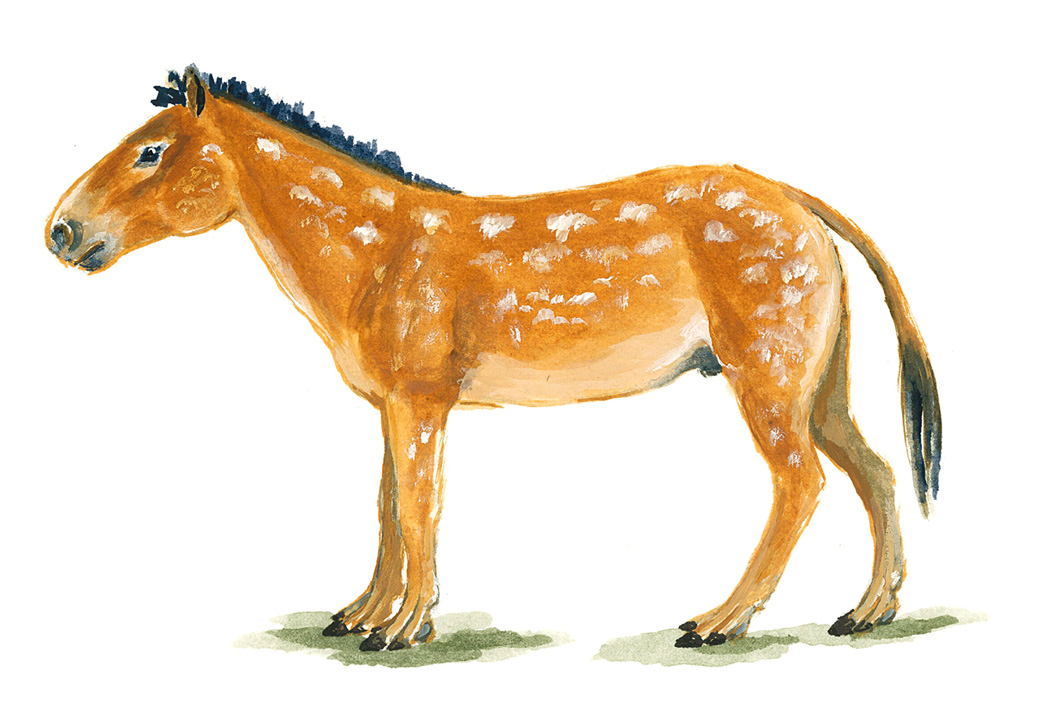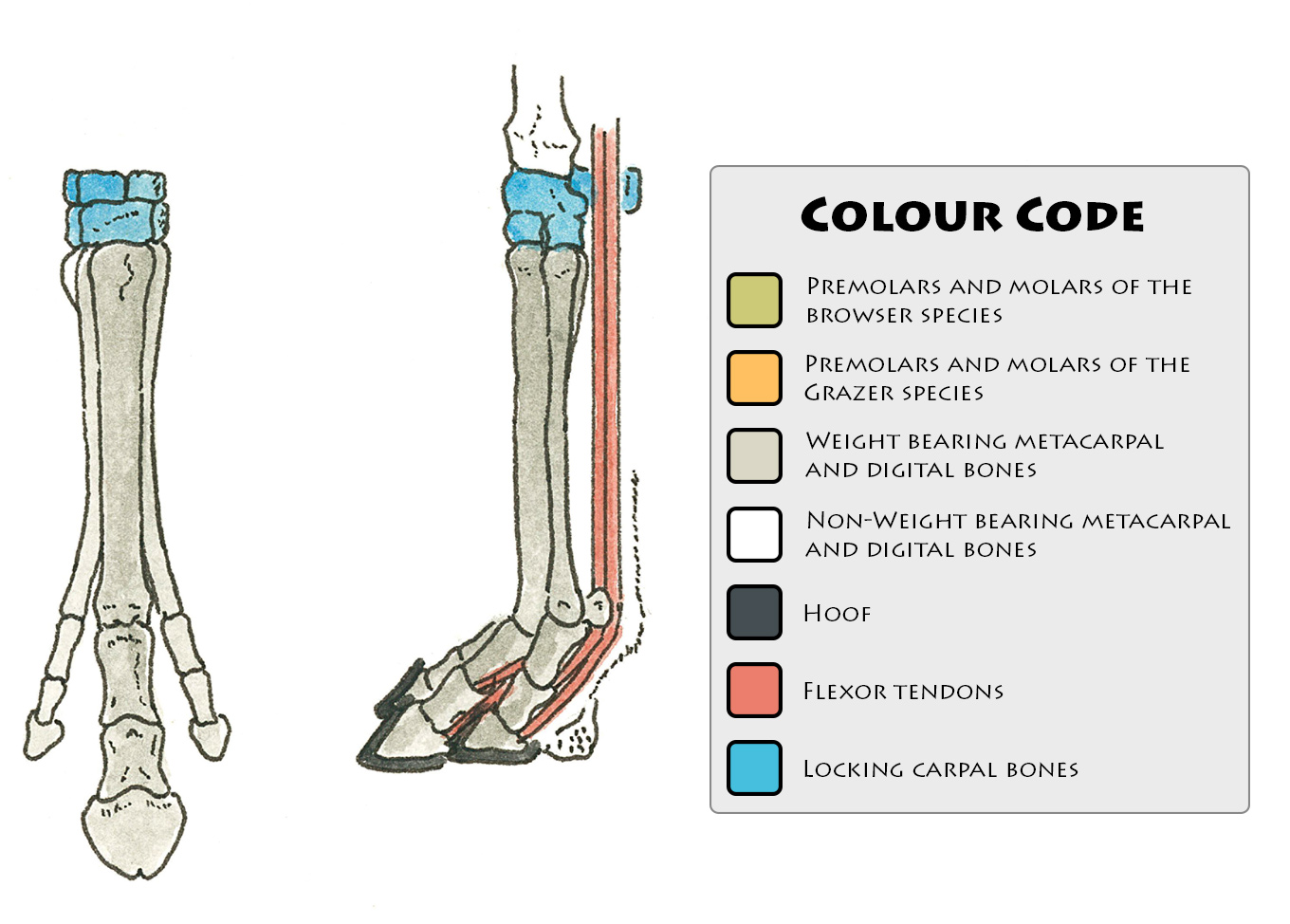 Name: Mesohippus
Name: Mesohippus  Name: Mesohippus
Name: Mesohippus About 38 million years ago, Mesohippus was living in North America. Fossils of this species have been found in Oligocene layers of Colorado, Nebraska, the Dakotas, and Canada, from about 37 to 32 million years ago. Mesohippus means “middle” horse and it is considered the middle horse between the Eocene and the more modern looking horses.
 It had lost some of its toes and evolved into a 3-toed animal. The middle toe was larger and all three toes supported the animal’s weight. It would have been about the size of a medium to large dog or a miniature horse. It was most likely a browsing horse and its teeth were low crowned.
It had lost some of its toes and evolved into a 3-toed animal. The middle toe was larger and all three toes supported the animal’s weight. It would have been about the size of a medium to large dog or a miniature horse. It was most likely a browsing horse and its teeth were low crowned.
Previous horses had four toes on their front feet. This was a three-toed horse, with the middle toe as the largest toe, but all toes were touching the ground and carrying weight. The remnant of the fourth toe was now a splint.
 It was about the size of a miniature horse and lived by browsing for food with its low-crowned molars. Its premolar teeth became more like molars. The diet may have been shifting to a diverse diet that may have included fruit, leaves and probably grass. Mesohippus and Miohippus probably lived alongside each other 34 to 39 million years ago.
It was about the size of a miniature horse and lived by browsing for food with its low-crowned molars. Its premolar teeth became more like molars. The diet may have been shifting to a diverse diet that may have included fruit, leaves and probably grass. Mesohippus and Miohippus probably lived alongside each other 34 to 39 million years ago.